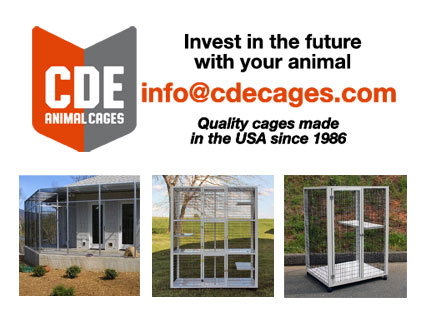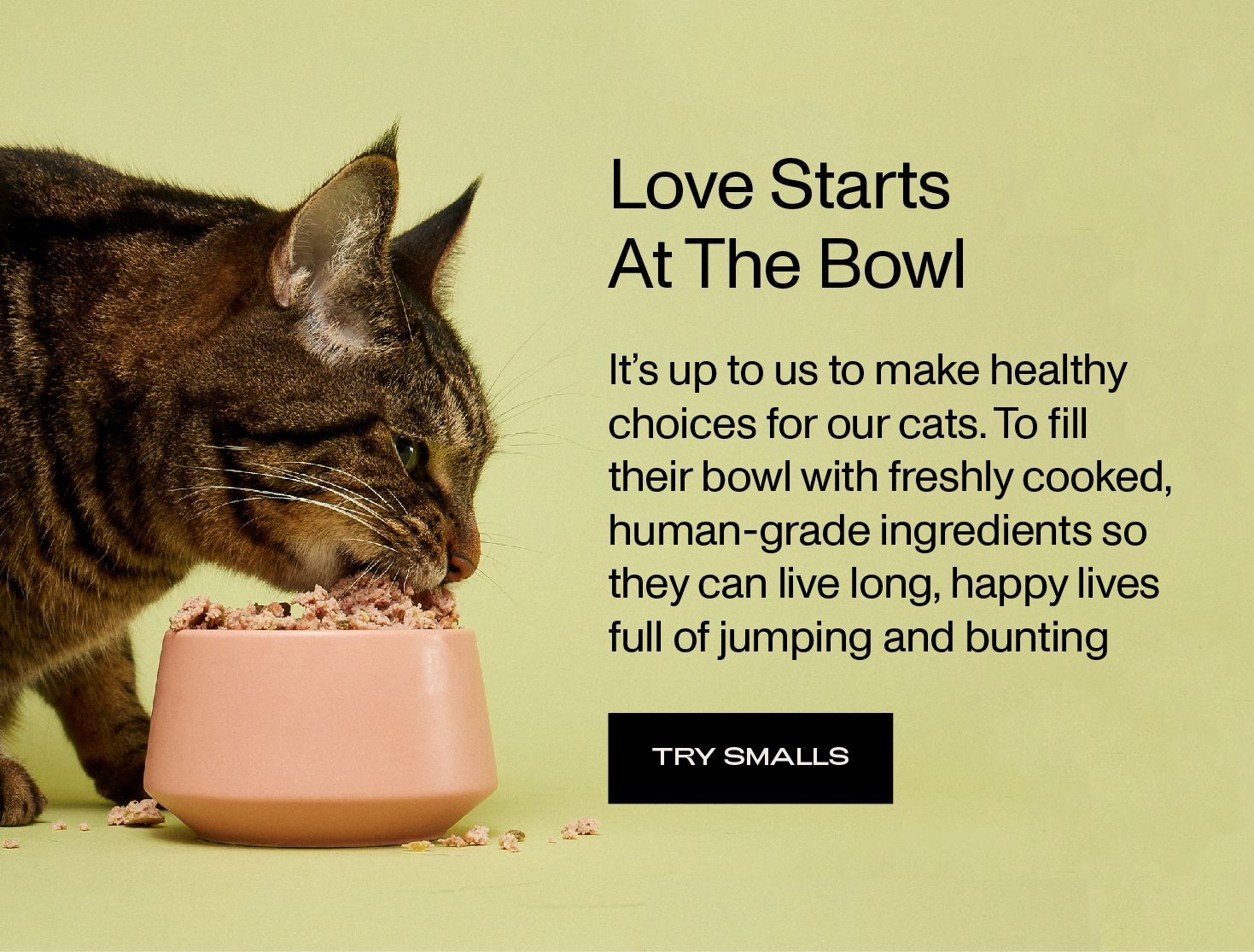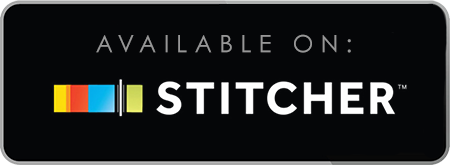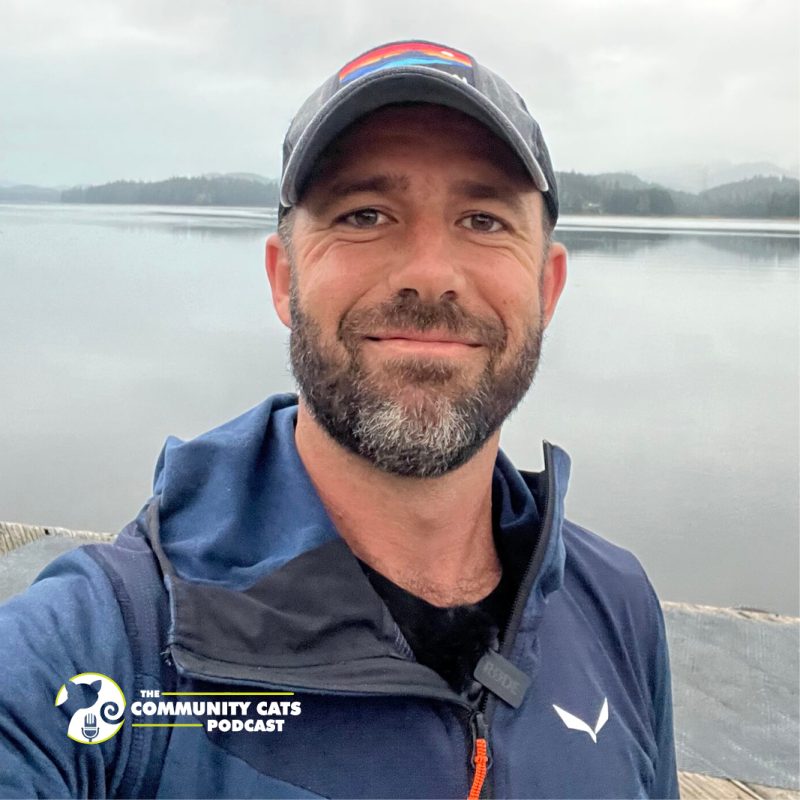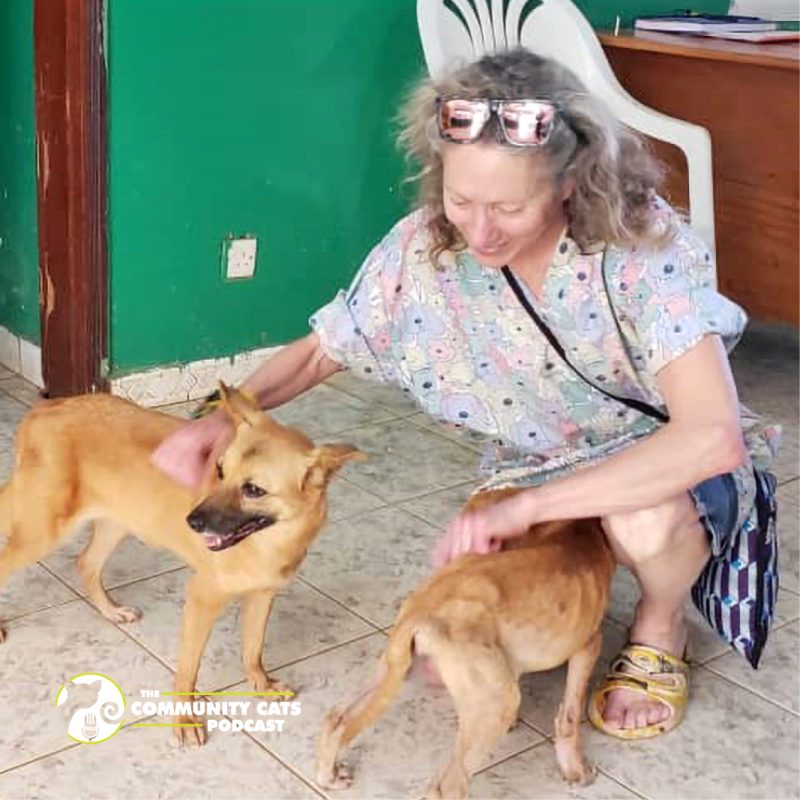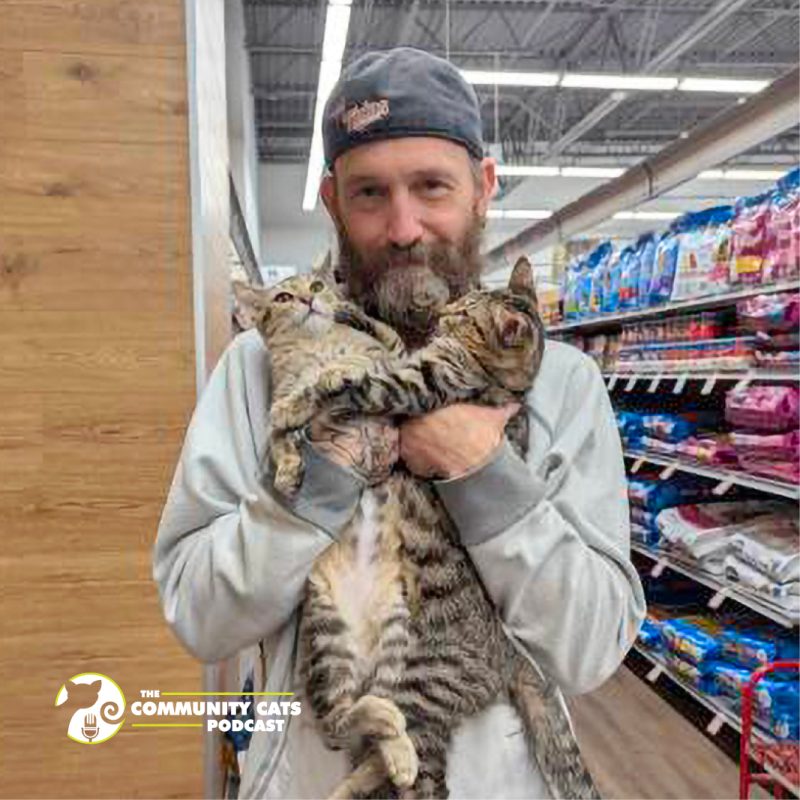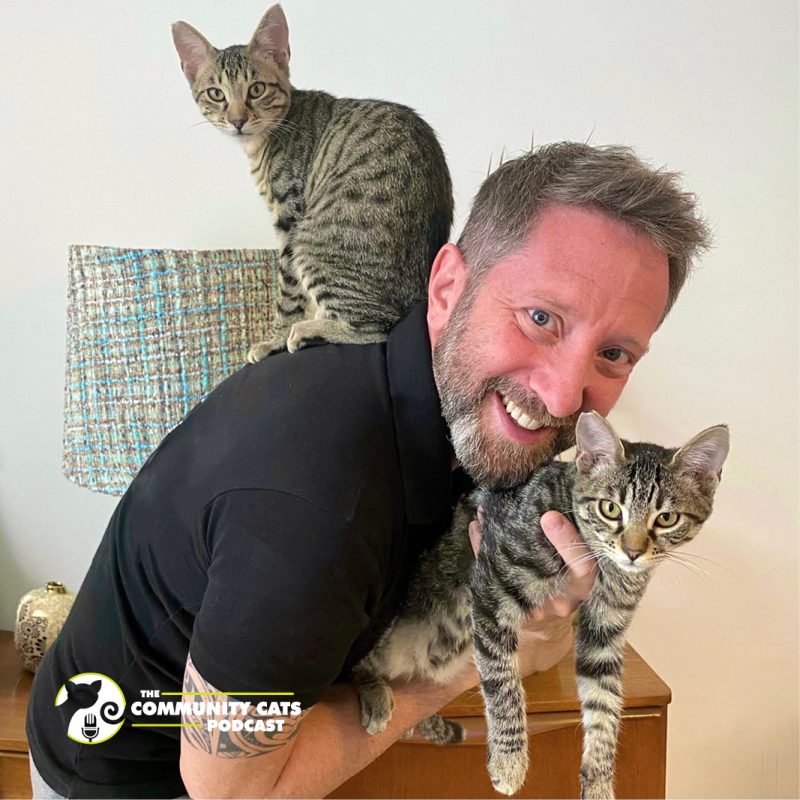
Book Reviews
March 25, 2021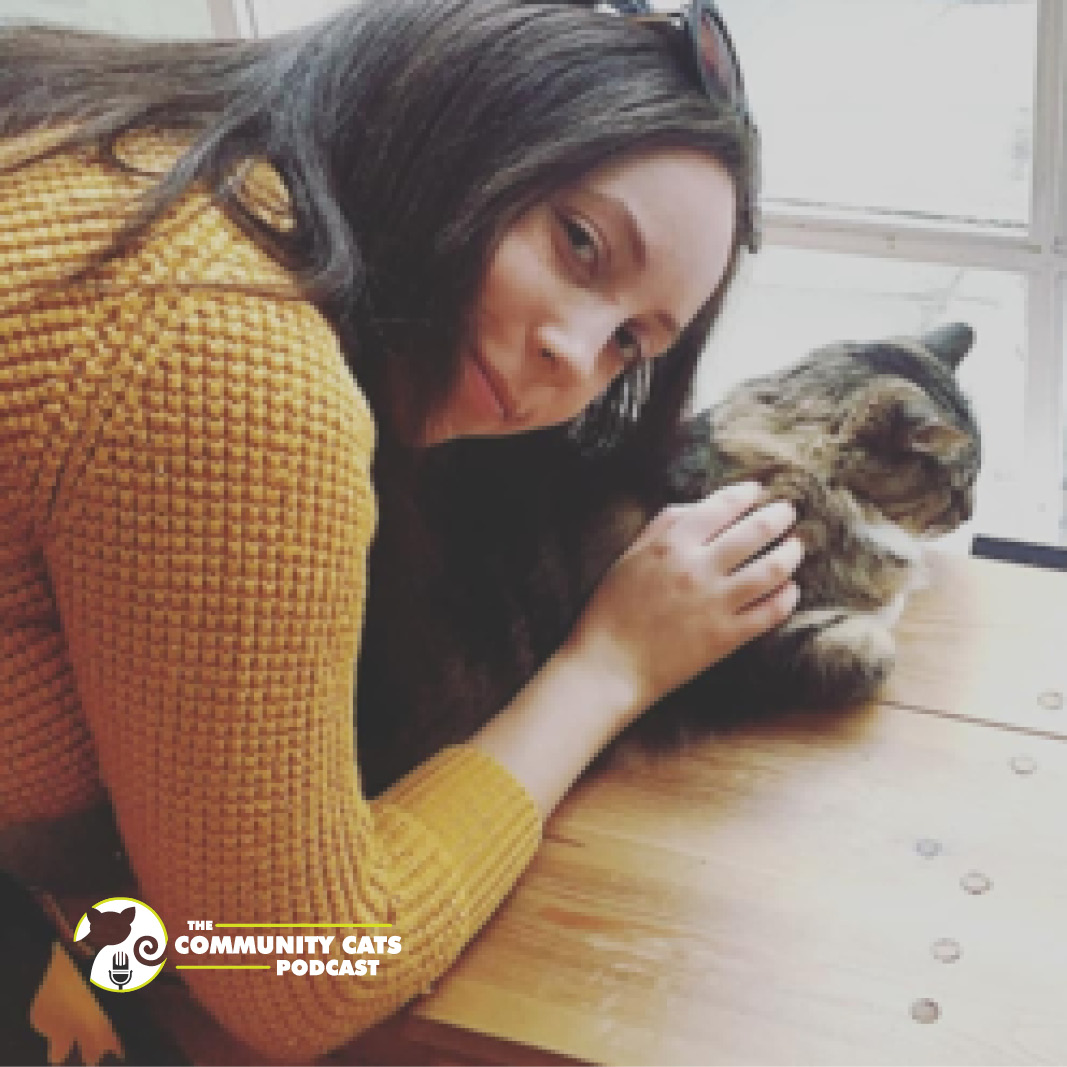
Michelle Adams, Founder of Chatty Cats Care
April 5, 2021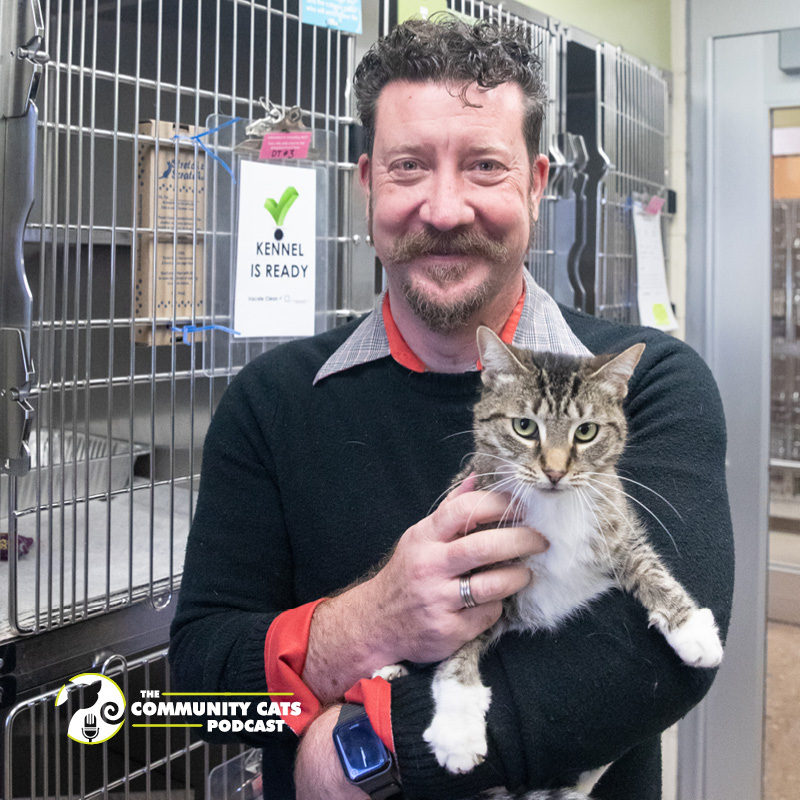
“I’m very interested in both process and scale, and figuring out how we can do things to maximize the amount of good we can do in the world.”
Listen to Episode #397 Now
This episode is sponsored in part by CDE Cages and Doobert.com.
Stacy’s guest this week, Gary Evans, works as the Clinic Director for the Humane Society of Huron Valley (HSHV), where he previously worked as a “cat wrangler” or Community Cat Coordinator. Before coming to the world of animal welfare, Gary worked in the entrepreneurial space with tech startups.
HSHV is a high volume spay/neuter and full-service vet clinic, and adoption shelter. They have been working as the leading provider of TNR in Michigan for over a decade and have helped about 16,000 outdoor cats.
Gary and Stacy talk about how Gary has been able to use his background to help scale up the number of cats HSHV helps, including finding better ways to use resources, mobilize volunteers, and provide tools and education to the community. While COVID-19 has slowed them down some, they’re still working toward their goal to make Washtenaw County the best place in the country to be an animal.
To find out more about HSHV and to find resources on community cats, visit their website.
Read Episode #397
Kristen Petrie [00:00:02]
You've tuned in to the Community Cats Podcast. Ready? Let's go.
Stacy LeBaron [00:00:12]
Welcome to the Community Cats Podcast. I am your host, Stacy LeBaron. I've been involved helping homeless cats for over 20 years with the Merrimack River Feline Rescue Society. The goal of this podcast is to expose you to amazing people who are improving the lives of cats. I hope these interviews will help you learn how you can turn your passion for cats into action. Today, we're speaking with Gary Evans. Gary is the clinic director for the Humane Society of Huron Valley. The Humane Society Clinic is a full-service high-volume surgery and outpatient facility dedicated to serving the animals of Washtenaw County. HSHV has been deeply committed to TNR for over a decade, and is the leading provider of TNR services in Michigan, providing TNR care for almost 1,500 cats per year. It has helped almost 60,000 outdoor cats in total. Under Gary's leadership. HSHV has been able to significantly expand the medical care availability for community cats in Washtenaw County and Arbor area. Now in addition to offering standard essential medical care that they have always offered, the clinic offers surgeries and helps arrange aftercare for a variety of serious conditions, including deep wound repair, amputations eye removal and even dental services. Before taking over the clinic, Gary served as the Community Cat Coordinator or Cat Wrangler as the title is informally known for HSHV. Prior to that Gary made his career as an executive leader working with startup companies in his community’s thriving entrepreneurial technology space. After 15 years building and growing tech startups, he decided to bring his love of people in a skill building operational systems to the nonprofit space. He helped the Area Agency on Aging set up a new program designed to increase the amount of seniors who can't safely age at home before turning to his true love: animals. Gary lives in Ann Arbor with his beautiful wife, three children, and the family’s animal companions, which include a grabby but beloved old dog, Great Dane Boxer mix, and five quirky cats. Gary, welcome to the show.
Gary Evans [00:02:17]
Thank you so much for having me, Stacy.
Stacy [00:02:19]
So, before we take a deep dive and what you're doing at the Humane Society, if of Huron Valley, first, you have to always answer the question: why are you passionate about cats?
Gary [00:02:29]
It's a good question and I don't actually know why. I just know that I always have been. So, I've always been around cats and when I find out home with a cat in it, it's a home I like even better. I just there's something about cats that give me great comfort and happiness and ever since I was a little kid that's been true and I've always had them around me.
Stacy [00:02:50]
So, did you coin the name Cat Wrangler or did somebody else or in that title before you?
Gary [00:02:56]
I came up with that title. The official title of the post is Community Cat Coordinator, which was kind of a mouthful. And, so I wanted something that was a little bit more fun and so Cat Wrangler is what we came up with. So yeah, just something that was a little bit more informal a little bit more fun.
Stacy [00:03:12]
Were you the organization's First Community Cat coordinator or had there been somebody their previous to that?
Gary [00:03:19]
No, Humane Society of Huron Valley or HSHV has a long tradition of TNR and we have employed a full-time person as the Cat Wrangler for over a decade now. I only started very late in 2018, so the program had a robust history before, honestly, before I was even aware of it, let alone before I joined it
Stacy [00:03:42]
So, I got to figure this one out. So, you went from being in the entrepreneurial technology space into Community Cat Coordinator. How did that happen for you?
Gary [00:03:52]
It was kind of a strange bounce Ann Arbor where I live, we have the University of Michigan here, and we really do have a very, it's a thriving tech community. And there are a lot of smart people who come here and start businesses. And that's really where I had made my living. And I'm really an operations guy at heart so setting up new businesses and figuring out how to build systems that work and take care of, people are kind of my skill set. The business world was very rewarding. I learned a lot but emotionally it wasn't maybe all that it could be and I moved to the nonprofit space and I had fun working for the Area Agency on Aging, but animals are a cause that are more dear to my heart. And it was really strange, my wife, almost as a joke, I'd been looking for a for a change, my wife sent me a job posting for the Community Cat Coordinator, and I thought well, I don't think that I'm quite what they're looking for, but I'm going to go ahead and apply anyway and a month later, lo and behold, I was given the position and it was really exciting. So, I think kind of what they saw in me was, I'm not maybe the typical person who does the job. I'm probably a little bit older than the average person and frankly, I didn't have any type of professional background in animals, but I like this, you know, I explained to them that I'm very interested in both process and scale and figuring out how we can do things to maximize the amount of good that we can do in the world and they were at a spot with the program where they were looking to see how they could expand it. They had a really great program in place anyway, but nonetheless they were looking to see how they could move it forward and so I took the role so I went from, you know, working in offices and spending my days working and you know, in PowerPoint and Excel and writing emails and working with boards to being the guy who got in the van for a year and went out with traps and caught kitties to bring back to make sure that we made them well and fixed them and then took them back. So, it was quite a transition.
Stacy [00:05:45]
So, we're talking earlier before we hit the recording button a little bit about a different perspective or a new perspective around community cats. You know, what is unique at the Humane Society of Huron Valley and their approach to community cats?
Gary [00:05:58]
So, one of the things that we bring that probably is not unique is just a great deal of passion. Again. Our CEO has been deeply committed to TNR and our whole organization for a long time. But what we're trying to sort of change is figuring out, how can we scale TNR to another level, because we have the constant challenge of wanting and trying to help with there being so many cats in need. Now, the Humane Society of Huron Valley had really done a nice job of creating a big volunteer program. So, we work with a large group of volunteers who helped us trap, who help us with shelter building, sort of all of those things. But what we really wanted to do is dive into and find ways to increase the amount of good that we can do. Again, for me, it comes down to sort of the processes that we use to kind of maximize the scale that we can work at with really valuing a highly scientific underpinning. Right, so, in our space, as you know, there's a lot of, we'll just, I guess I should just say, it's a space I think that could really benefit from, you know, continued insight and research. There’s a lot of anecdotal evidence. There's a lot of, you know, both for and against, you know, TNR. But, so we kind of want to look at what are the observed facts, what are the tools that we have, and then how can we use those to best serve the cat community, both the cat and human community, both helping community cats, but also making sure that we're managing them in a way that works for humans that are around colonies also.
Stacy [00:07:22]
So you're talking about scaling the program, what are the tools that you brought into play to help as scale it up and when you're saying scaling to what volume are you talking? Doubling the number of cats you did or 10%, 20%? You know, do you have any of that information?
Gary [00:07:39]
Yeah, I sure do. So, in 2018, we helped a lot of cats but it was about, it was in the 800 range. When I took over last year, we scaled that up to about 1,400. And this year, we're hoping when we have a great new Cat Wrangler this year that number is probably going to be almost 25% higher again this year. So, we hopefully are going to be doing twice as many cats or roughly twice as many as we were just two years ago and that's keeping in mind that even two years ago we were still helping a lot of cats. One of the things about our humane society is to be able to TNR a large-scale, it does take some, you know, some, some investment that the organization had made prior to me coming, so we have a van and a full-time employee who goes out and looks, you know, to sort of to trap on our own and to help and help mobilize volunteers and we spent a lot of time doing surgery each day. I mean, last month we did about 200 TNRs, and the scaling that I'm talking about is really building on top of those already cool tools, you know, that we have invested in overtime and figuring out better ways to spread education to mobilize volunteers. You know, one of the, a small change that we made is we've put a schedule system in place. It used to be that, you know, for our hardcore volunteers, you didn't really need to schedule appointments; that's one of the things that people liked about us. But what we would find is that on a people would all go out trapping on Sundays and Monday, we might have 30 cats and it would be really difficult. It would be hard on the cats would be really hard on the surgery team who had to take care of them. And so we put in a scheduling system in place. So now while people still have access to bring in high volumes of cats. We spread it out, so instead of having 40 cats on Monday and there are not so many during the week and being initially swamped, now, we have a steady flow of cats all through the week, which means we don't get overwhelmed. We have more, even though we're helping more cats. We could spend more time per cat. The cats are, you know, not quite as cramped as they might have been otherwise. And it's all these, looking at all these little things that we can do that, allow us to continue incrementally, increasing the amount of help that we can provide.
Stacy [00:09:43]
It's interesting and I assume you're also utilizing the community themselves. And do you have a trap bank where you loan out traps to community members so that they can go and trap the cats and bring them into your clinic?
Gary [00:09:54]
That's absolutely right. So, like most TNR programs, we do, you know, require a cat to be in a trap and we can occasionally do transfers if there's no other option, but we rent out traps. We do a lot of training. We used to for instance, we used to do like trainings once every six weeks, we'd have a training. Now, we find it easier to just meet with people kind of on an as needed basis, but mobilizing the community is a giant part, giving them the tools and the education. It's sort of tying that one of the big things that we have done recently is we've really updated content on Artie and our page. Last year one of the things we did was organize what we call our TNR Think Tank, which was, you know, living in a college town like Ann Arbor, we have some really educated people looking to do good and several of them had volunteered to help with some research projects, which allowed us to really spend a lot of time looking at all the elements of TNR, not only how does the process work here at the Humane Society of Huron Valley, but what are the general questions that people have? What are the questions that caretakers specifically have? What questions do people have related, you know, to cat health, like can cats survive out in the winter or not? Can cats, you know, spread disease? A lot of these questions that you get and trying to take all of those things at that, you can find on the web but bring them all into one place where the evidence is highly vetted and easily shared so that people can really learn a great deal very quickly about the art of cat wrangling,
Stacy [00:11:15]
I can talk with you about clinic, scheduling, and all that kind of stuff for hours and hours and hours, because there is a lot of art as well as science to that, I think. And I can appreciate you working hard to figure out a way to get the community cats in there and not lose those slots. I mean, right now we have continued shortages in veterinary care, spay neuter slots at clinics all across the country, so we want to make sure that every slot is filled and utilized and not passed up. That's for sure. So, that's fantastic. You know, do you want to share a little bit more about what your organization does? You operate a high-volume surgery clinic, as well as having an adoption program. You want to share a little bit about what your organization does? Your website is beautiful, I have to tell you. It's a gorgeous website and it's got a lot of information and I'm only scratching the surface, so feel free to share with our listeners everything that you do.
Gary [00:12:10]
So, yeah, it's a great question. And again, part of the reason I was so excited, you know, to come work here as because of just kind of everything that they've built here. You know, we are a shelter, so we take care of, you know, stray cats or stray animals of all types. In fact, just this morning, I heard that we got 18 birds had been had been dropped off. So we intake animals, we adopt them out. We have a full-service vet clinic, including surgery. We have a really robust on volunteer program. We actually have a very strong cruelty and rescue program. The woman Michelle Baxter who runs it is wonderful. But our goal is to make Washtenaw County, our not so humble goal, is to be the best place in the country to be an animal. So again, whether it's wildlife that has been reported injured, you know, we respond to those costs 365 days a year, 24 hours a day and our cruelty team is out every day responding to complaints of animal cruelty or any possible issues where animals are not being cared for. Yeah, we have a big education, a big humane education program in place. So, we really are trying to take a very holistic approach to not just making sure that animals are healthy and wanted but that there's a wellness of the animal community here in our area.
--Start mid-roll advertising-- [00:13:22]
Are you one of the selfless members of our society that spends time rescuing and bettering the lives of cats in your community. If so, wouldn't it make sense to do the most you can do with the space you have? CDE Animal Cages is a family-owned and operated business that has been handcrafting the highest quality small animal cages for over 30 years with the goal of connecting shelters and rescuers with comfort and security for the health of the animals they work with and ease of use for the humans that take care of them. Open air enclosures with very solid options and portalized options have proved not only to reduce euthanasia rates, but make for more adoptions and healthier and happier animals. Our high quality materials are designed to last for decades, ensuring that you only shop for cages once, leaving more time to spend with the cats in your life. Get started today by logging onto CDECages.com to design your perfect setup. Invest in the future of your cats with CDE Animal Cages.
[00:14:20]
By now, you know how powerful the Doobert software platform is facilitating everything from transport to fostering with just a few clicks, but did you know that the team at Doobert also provides consulting and custom software development for your organization's needs? The team at Doobert has extensive experience in website design, SEO strategies, mobile application development, and even advanced capabilities involving integration to social media and text messaging. Big or small, the team at Doobert can do it all, and because Doobert operates as a social enterprise, all of the revenue from their consulting services goes back into developing even more Innovative and life-saving solutions for animal rescues around the world. So, if you are planning to increase your digital presence online through a new website or some SEO strategies or if your organization is looking for an experienced web development team to support your operations, look no further than the team at Doobert. Reach out to Chris today at Chris@doobert.com, and he would be glad to discuss what you're trying to accomplish and how they can help.
[00:15:21]
Are you ready to be part of the solution for feral and stray cats in your neighborhood? If so, then make sure to sign up for our next to Neighborhood Cats TNR Certification Workshop. A new workshop is held online each month, generally on the first Saturday of the month but please check our website for exact dates. For just $10, expert instructors will teach you best practices for trap, neuter, and return: TNR. Learn what TNR is and why it works. We’ll cover getting along with neighbors, preparations for trapping, trapping itself, including entire colonies at once, feeding, providing winter shelter, and more. Take advantage of the interactive format, extensive handouts, and video footage of actual projects. Attendees will receive a certificate of attendance and gain access to an ongoing Facebook Group for networking with other TNR activists. The two-and-a-half-hour workshop. Is led by Susan Richmond, the Executive Director of Neighborhood Cats and Brian Kortis, Neighborhood Cats National Programs Director. To find out the date of the next workshop and sign up, just visit communitycatspodcast.com.
--End mid-roll advertising-- [00:16:24]
Stacy [00:16:26]
So, with the fact that we've all been living with COVID and there's also been this movement of having fewer animals in our shelter. So, share a little bit about what the response has been for your organization with regards to Coronavirus.
Gary [00:16:44]
So, it's been very challenging but I have to say it's been very positive too. So, appointments are a little bit slower. We move to curbside service, which has slowed us down a little bit and it is tough because as you mentioned, there is a shortage of help for animals right now. The backlog is very high, so throughout this entire thing, through the entire year, we have remained committed to help sick animals. We view ourselves as an essential service and helping sick animals, even our community cats, even our on socialized cats, but we did have to slow down some of our other services for a while. But again, to the point that you made earlier, such a giant part of trying to get our ground back is by just being smart and nimble in how we schedule and prioritizing the animals in the greatest need without letting just basic wellness appointments go too long either, right? Sometimes, I've got an emergency after take care of before I give this cat, you know, a booster. But on the other hand, I don't want to let that booster go either. So, it just involves a lot of flexibility and I have to say we're really fortunate; I have a very committed and hard-working team that really, I think, understands the magnitude of the challenge of trying to get caught back up and its really rising to the challenge. So, a big part of what it takes is, I think what, you know, listeners to your podcast will recognize, as we all have is just a lot of passion.
Stacy [00:18:01]
I want to cycle back quickly; you mentioned earlier, and I guess I should ask you this question because I should ask it of anybody who has a TNR program sort of in the northern climates. What is your thought around returning cats in the wintertime?
Gary [00:18:16]
I'm not personally a giant fan at all. And, so we, I said that we have a full time. We have a fulltime trapper. We do not in the winter months. We don't operate. We will still do perform TNR surgeries and I still, I still fully support them, as long as we have some plan to give the animal, you know, to give our kitties time to recover. If they're going to be in a barn, if they are going to be taken care of by somebody for a little while or given some extra TLC, if we know that they have excellent shelters, then I think it mitigates the problem quite a bit, but it is always a touchy area, but we will perform the services for anybody you know that we think is going to be able to provide the care to a kitty year round.
Stacy [00:19:02]
Good to know, good to know. And one other question I have for you: if you had as many resources as you wanted, where would you spend the funds to make life better for community cats?
Gary [00:19:16]
I think the single biggest thing that we could do to help would be increasing the amount of TNR procedures that we could do. So simply having more ability to just get hands on cats. And again, that's whether or not it just needs a vaccination and to be fixed or whether it's got a bad leg or a bad eye because we believe that providing those services are equally as important. Recovery areas, finding volunteers who can help us provide recovery is also really important. Again, whether it's a cat, you know, whether it's a female that's been fixed in the winter or it's a cat that's had to have an enucleation or had an eye removed, we can't just put them straight back out. So having people who are sort of willing to help with that process and the other things are probably, you know, I guess what you would imagine as well, having more fosters. One of the things that we're really proud of this year is we're going to adopt out probably 200% more. It's going to be probably a 150 or a 160, maybe closer to 200 cats that we have taken mostly kittens that were on the path to become outdoor unsocialized cats that we have now, we’ll be able to get in people's homes. So, more sponsors and the final thing: education. Anything that we can do to help people know that, hey, overfeeding can be a real problem. It feels good, but it's, but it's a real problem or let people who don't love the cats, you know, be able to spread the message that you're not going to get sick from them. Compared to the other things that are out there, you know, we have a symbiotic relationship where we've developed over thousands of years with cats, where we don't make each other stick. That's part of the reason that we've been so close. So that's kind of a long-winded answer to what was a straightforward question. But I guess I would say in every way we just need to keep trying to find ways to expand what we're doing while ultimately continuing to document what we're doing so we can continue to bolster the arguments that TNR as we know the only solution that works when it comes to reducing cat populations. It's really nice to know that that only solution that works is also the humane one that we can all feel good about.
Stacy [00:21:13]
That's great. I also have a question, the fact that you are in a college town and we always hear about people saying, “Oh, the kids, they get cats, then they just let them outside and blah, blah blah.” Do you feel that way operating in a college town or do you feel that it's different in the kids are more responsible or more interested in being engaged, or are you involved with the college in any way, shape, or form?
Gary [00:21:38]
Yeah, so we definitely really value. And back in my old Tech life, you know, work with university was key to finding talent and I still value that, really highly. I have to say in general, I guess, two things. One is the students overall are a boon to our cat population and not a problem. That's certainly not to say that there aren't, you know, people who like cats go that shouldn't of any age. But in general, I find the arguments that community cats problem of abandoned cats – that has not been my experience, overwhelmingly. It's a problem, but the real problem in my opinion is colonies of unfixed cats. I tend to believe that most of the cats that need to be TNRed were born outside, were never socialized, and that's a much bigger problem. Where we find large communities of cats, I tend to think that it's not so much that people are just all going to the same barn and dropping off cats or all that “Oh, this is by a dorm or apartment off-campus, so people must be dumping cats here.” It only takes one or two. It only takes, I think as you've said in Adam and Eve, and if somebody is feeding them, they're not getting fixed, and next thing, you know, you've got a really big problem on your hands. So, I tend to think those are much, bigger problems and abandonment by people of any age, but that's not to say that abandonment is not a problem also.
Stacy [00:22:55]
If folks are interested in finding out more about your organization, how would they do that?
Gary [00:23:01]
Really simply, if you go to hshv.org. That's a “h” as in “humane”. It's Humane Society of Huron Valley, so it's hshv.org. I'd love it if you wanted to, when you go, you'll see some buttons along the top. If you go to the help section, you'll see our community / feral cats page. We’ve really put a lot of effort into trying to have some excellent content there. And I, you know, I highly recommend anybody who would like to, to go to check it out.
Stacy [00:23:28]
And Gary. Is there anything else you'd like to share with our listeners today?
Gary [00:23:32]
No, it's been a pleasure talking and I really appreciate you giving me a chance to sort of talk about some of the stuff we've done. We've covered a lot of ground and no, I think, I think we're good.
Stacy [00:23:40]
Yeah, and I think that it's really important to understand that, you know, you don't necessarily have to have a full-time staff member to have a TNR program, you're using volunteers in addition. Yes, you can scale up more certainly with extra resources and you've done a phenomenal job of incorporating community cats within an organization, which also can sometimes be challenging, so that's fantastic too. But we also can say too that just doing the cats in your own backyard is really important too. So, Gary. I want to thank you so much for joining us today. And I hope we'll have you on again in the future.
Gary [00:24:15]
That would be great with me too. Thank you again, Stacy.
Stacy [00:24:18]
That's it for this week. Please head over to Apple podcasts and leave a review. We love to hear what you think and a five-star review really helps others find the show. You can also join the conversation with listeners, cat caretakers, and me on Facebook and Instagram, and don't forget to hit follow or subscribe on Spotify, Apple Podcast, Google Podcast, YouTube, Stitcher, or wherever you listen to podcasts, so you don't miss a single show. Thanks for listening, and thank you for everything that you do to help create a safe and healthy world for cats.
[00:24:49]
The Community Cats Podcast would like to shout out a few of our online event sponsors. Did you attend the United Space Alliance conference? In March, the incredible content and educational opportunity were brought to you in part by Marion's Dream and Humane Network. If you or your organization would like to sponsor content that you care about and that saves feline lives. Go to communitycatspodcast.com/sponsor and learn more about how you can turn your passion for cats into action.

